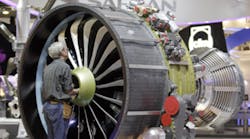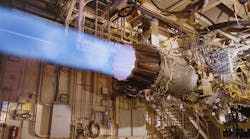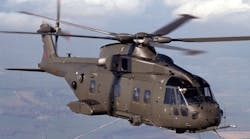Rolls-Royce PLC and Pratt & Whitney will not work together to develop engines for mid-size commercial aircraft, as planned according to a 2011 joint-venture agreement, because of concerns about regulatory interference. The partnership had been announced in 2011 to develop high bypass-ratio geared turbofan engines for commercial aircraft that carry 120 to 203 passengers. The Airbus A320neo and Boeing 737 MAX were indicated as the types of aircraft in consideration. Each is in development for introduction in the 2016-17 period.
Both engine builders said at that time that the mid-sized jet market would require almost 45,000 such engines over 20 years. Aircraft OEMs’ plans continue to emphasize a need for fuel-saving, narrow-body jets to serve regional and medium-distance routes. In fact, Airbus indicated earlier this year that it had more than 80 orders already for the A320neo.
Now, however, the partners have soured on their venture because of the “current regulatory environment,” according to published sources. Specifically, because there are so few engine manufacturers in that market segment, there is concern among the pair that their enterprise would draw anti-trust scrutiny.
GE Aircraft also supplies engines for the Airbus A320neo.
The Rolls/P&W venture emerged from the demise of an earlier effort: Rolls-Royce, Pratt & Whitney, and others, had established the International Aero Engines partnership, which produces a smaller geared turbofan unit for the Airbus SAS A320 narrow-body jet family. Rolls-Royce backed out of that arrangement, and the mid-sized engine strategy then developed.
The partnership was to have supplied OEMs Airbus and Boeing with an alternative to.
Each company had planned to hold an equal share in the venture, which also aimed to coordinate research on propulsion systems, “including advanced geared engines, open rotor technology and other advanced configurations.”
"Pratt & Whitney remains fully committed to this important market segment and will continue independently to invest in and develop applications of its geared turbofan engine to power the next generation of midsized aircraft," according to that company's statement.








